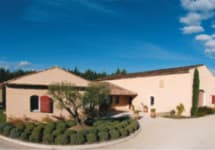Tardieu-Laurent Chateaneuf du Pape Vieilles Vignes (torn labels) 2009
-
Wine
Spectator -
Jeb
Dunnuck -
Robert
Parker -
Wine
Enthusiast



Product Details
Your Rating
Somm Note
Winemaker Notes
Professional Ratings
-
Wine Spectator
Very solid, with a youthful core of blackberry, plum and fig coiled up with lots of spice, licorice snap and ganache. The tight, chewy finish needs some time to open up, but there's plenty of garrigue and smoldering fruit in reserve. Grenache, Mourvèdre and Syrah.
-
Jeb Dunnuck
Beautifully elegant and finesse-driven, the 2009 Tardieu-Laurent Châteauneuf-du-Pape Vieilles Vignes is a blend of 85% Grenache, 10% Mourvèdre, and 5 % Syrah that aged all in neutral French oak. It displays a deep, semi-opaque color to go with vibrant aromas of bing cherries, loads of garrigue, assorted flowers, and hints of licorice on the nose. Textbook southern Rhône and beautifully complex, with a core of sweet fruit, this silky, polished 2009 is medium to full-bodied, perfectly proportioned, balanced, and has sweet, silky tannin that emerges on the finish. While delicious now, this will age brilliantly, with 12-15+ years or more of prime drinking. Very well done and well worth seeking out.
-
Robert Parker's Wine Advocate
The 2009 Chateauneuf du Pape Vieilles Vignes comes primarily from two sectors of Chateauneuf du Pape, La Crau and Mont Olivet. It is a dense ruby/purple color, with plenty of garrigue, lavender, black currant, black cherry, sandy, loamy soil notes along with underbrush. A quintessential wine of Provence – full-bodied, powerful, yet at the same time, elegant and very complex – it can be drunk over the next 15+ years.
Range: 91-93 -
Wine Enthusiast
This is a rugged, firmly tannic rendering of Châteauneuf-du-Pape that requires time in the cellar to reach its full potential. That said, it may also pose a risk, because there are hints of Band-Aid on the nose and a slightly metallic edge to the finish that may worsen over time. The other flavors are potent and concentrated: plum, chocolate and licorice all leave lasting impressions on the palate. Try after 2016.
Cellar Selection
Other Vintages
2011-
Robert
Parker -
Wine
Spectator
-
Wine
Spectator -
Robert
Parker
-
Wine
Spectator -
Robert
Parker -
Wine &
Spirits
-
Wine
Spectator -
Robert
Parker


Tardieu-Laurent is very much an "artisan" producer, making between half a dozen and 20 or so barrels of each wine. The majority of the wines are from the southern Rhône although superb cuvees of Cote Rôtie and Hermitage are also produced. The wines are all aged in small oak casks (often 100% new) and bottled with no fining nor filtration. Michel Tardieu proclaims himself as a confirmed terroirist, insisting that his aim with each appellation is to express powerfully the fruit and sense of place, never masking these factors with wood.

With bold fruit flavors and accents of sweet spice, Grenache, Syrah and Mourvèdre form the base of the classic Rhône Red Blend, while Carignan, Cinsault and Counoise often come in to play. Though they originated from France’s southern Rhône Valley, with some creative interpretation, Rhône blends have also become popular in other countries. Somm Secret—Putting their own local spin on the Rhône Red Blend, those from Priorat often include Merlot and Cabernet Sauvignon. In California, it is not uncommon to see Petite Sirah make an appearance.

Famous for its full-bodied, seductive and spicy reds with flavor and aroma characteristics reminiscent of black cherry, baked raspberry, garrigue, olive tapenade, lavender and baking spice, Châteauneuf-du-Pape is the leading sub-appellation of the southern Rhône River Valley. Large pebbles resembling river rocks, called "galets" in French, dominate most of the terrain. The stones hold heat and reflect it back up to the low-lying gobelet-trained vines. Though the galets are typical, they are not prominent in every vineyard. Chateau Rayas is the most obvious deviation with very sandy soil.
According to law, eighteen grape varieties are allowed in Châteauneuf-du-Pape and most wines are blends of some mix of these. For reds, Grenache is the star player with Mourvedre and Syrah coming typically second. Others used include Cinsault, Counoise and occasionally Muscardin, Vaccarèse, Picquepoul Noir and Terret Noir.
Only about 6-7% of wine from Châteauneuf-du-Pape is white wine. Blends and single-varietal bottlings are typically based on the soft and floral Grenache Blanc but Clairette, Bourboulenc and Roussanne are grown with some significance.
The wine of Chateauneuf-du-Pape takes its name from the relocation of the papal court to Avignon. The lore says that after moving in 1309, Pope Clément V (after whom Chateau Pape-Clément in Pessac-Léognan is named) ordered that vines were planted. But it was actually his successor, John XXII, who established the vineyards. The name however, Chateauneuf-du-Pape, translated as "the pope's new castle," didn’t really stick until the 19th century.
